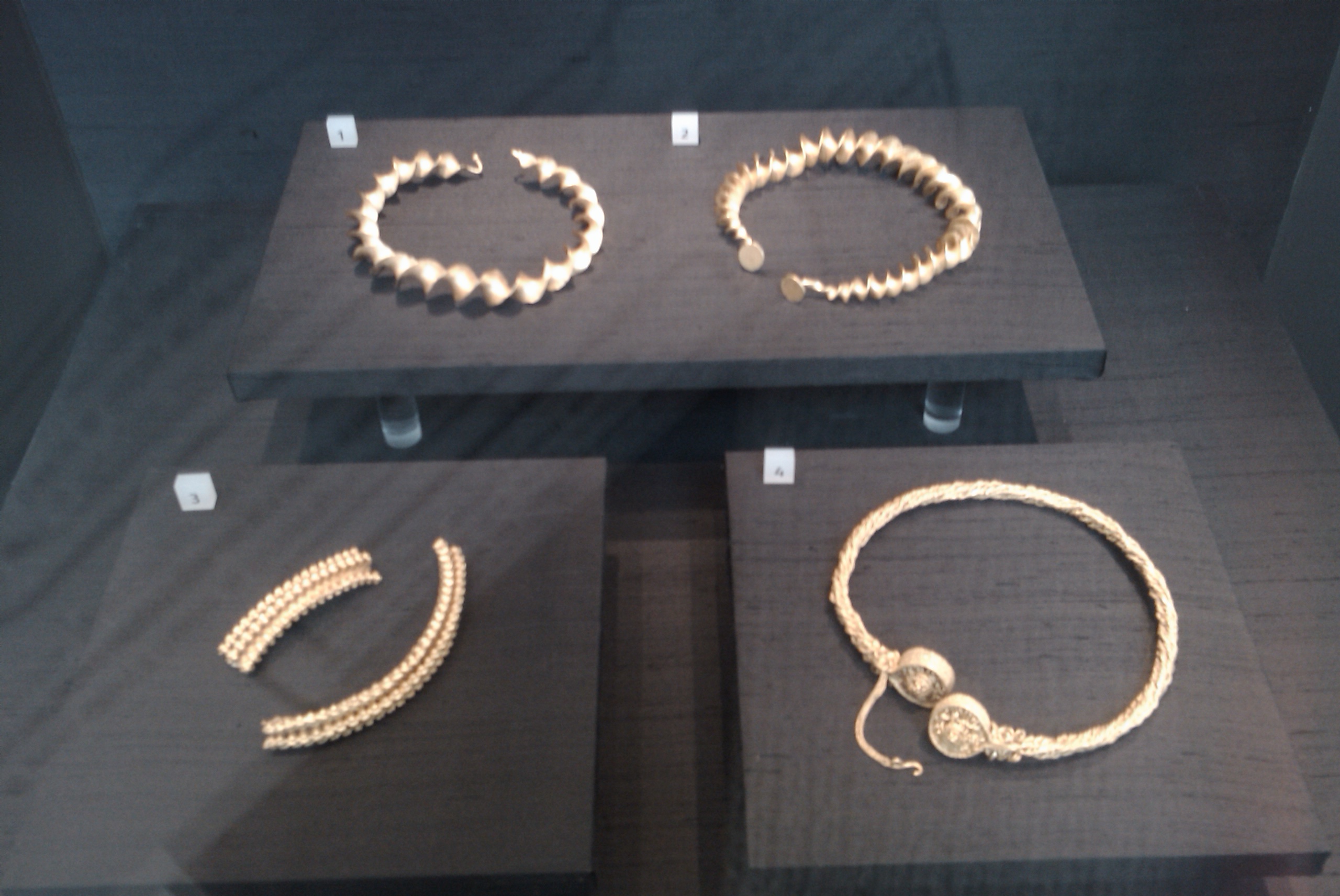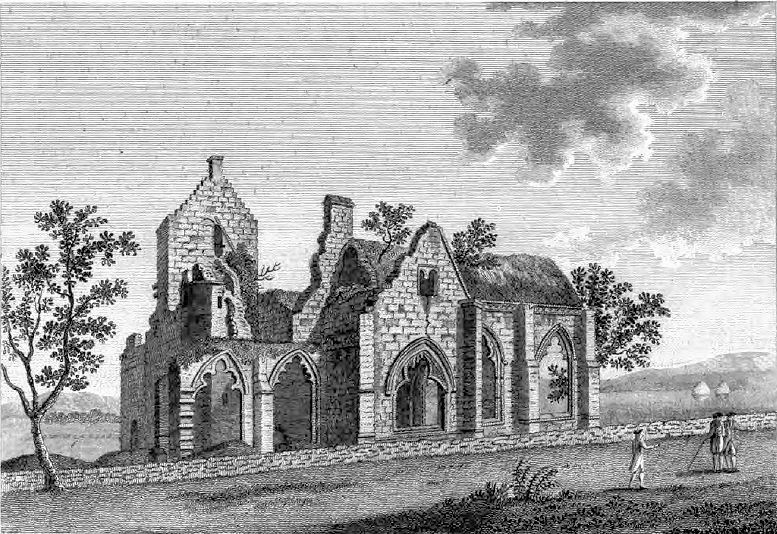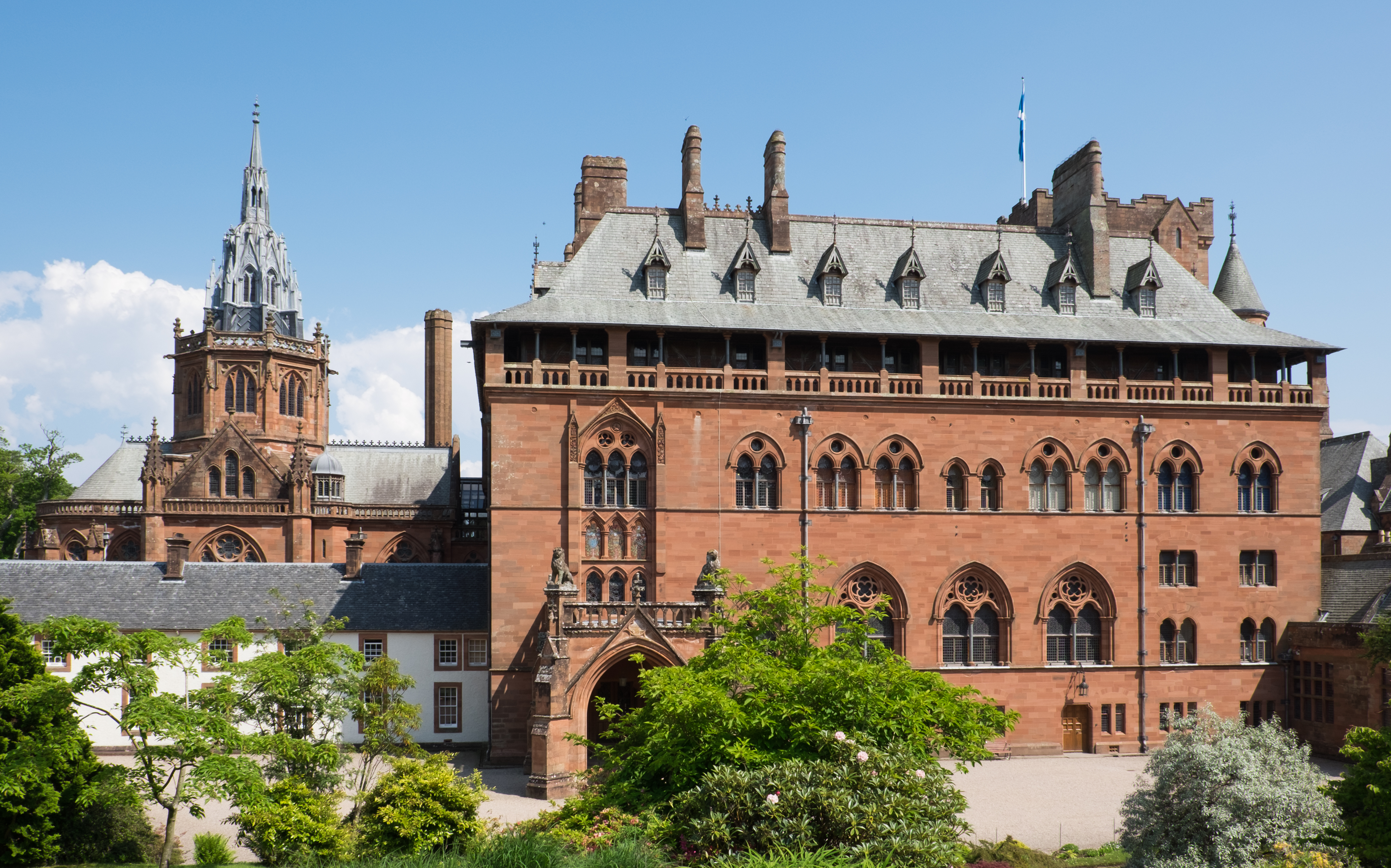|
Alexander McGill (architect)
Alexander McGill (died 1734) was a Scottish mason and architect, who worked in partnership with fellow architect James Smith. His work was influenced by that of Sir William Bruce, and some of his designs later appeared in William Adam's ''Vitruvius Scoticus''. The son of George McGill, a mason in Arbirlot, Angus, he was apprenticed in June 1697 to Alexander Nisbet, a mason in Edinburgh. By 1710 he had been admitted into the mason's lodge, and he is known to have visited London on at least one occasion (in 1717).Colvin, pp.530-531 From 1699 McGill was involved on work at Kellie Castle, Angus, in association with Alexander Edward, and from 1700 with Smith at Yester House in East Lothian. At the House of Nairn, McGill completed William Bruce's design after the latter's death. His own designs include those of Donibristle House in Fife, Blair Drummond (1715–17), which was demolished in 1870, and a town house for James Graham, 1st Duke of Montrose in Glasgow's Drygate (demolished ... [...More Info...] [...Related Items...] OR: [Wikipedia] [Google] [Baidu] |
Scotland
Scotland (, ) is a country that is part of the United Kingdom. Covering the northern third of the island of Great Britain, mainland Scotland has a border with England to the southeast and is otherwise surrounded by the Atlantic Ocean to the north and west, the North Sea to the northeast and east, and the Irish Sea to the south. It also contains more than 790 islands, principally in the archipelagos of the Hebrides and the Northern Isles. Most of the population, including the capital Edinburgh, is concentrated in the Central Belt—the plain between the Scottish Highlands and the Southern Uplands—in the Scottish Lowlands. Scotland is divided into 32 administrative subdivisions or local authorities, known as council areas. Glasgow City is the largest council area in terms of population, with Highland being the largest in terms of area. Limited self-governing power, covering matters such as education, social services and roads and transportation, is devolved from the Scott ... [...More Info...] [...Related Items...] OR: [Wikipedia] [Google] [Baidu] |
Blair Drummond
Blair Drummond is a small rural community northwest of Stirling in the Stirling district of Scotland, predominantly located along the A84 road. Lying to the north of the River Forth, the community is within the registration county of Perthshire and the civil parish of Kincardine History A former resident of Blairdrummond House was enlightenment thinker Lord Kames whose wife inherited the house in 1766. Lord Kames began the transformation of the carse area of Blair Drummond; turning it from an often water-laden moss into productive agricultural land, which brought him an income of almost £2000 per year. Blair Drummond House was entirely rebuilt in 1868-72 by James Campbell Walker (under instruction from George Stirling Home Drummond FRSE) and again by James Bow Dunn after a fire in 1921-23 and is now a home for adults with learning disabilities run by the Camphill Movement. Four gold Iron Age torcs, known as the Stirling torcs, were found in Blair Drummond in 2009 and ... [...More Info...] [...Related Items...] OR: [Wikipedia] [Google] [Baidu] |
Scottish Architects
Scottish usually refers to something of, from, or related to Scotland, including: *Scottish Gaelic, a Celtic Goidelic language of the Indo-European language family native to Scotland *Scottish English *Scottish national identity, the Scottish identity and common culture *Scottish people, a nation and ethnic group native to Scotland *Scots language, a West Germanic language spoken in lowland Scotland *Symphony No. 3 (Mendelssohn), a symphony by Felix Mendelssohn known as ''the Scottish'' See also *Scotch (other) *Scotland (other) *Scots (other) *Scottian (other) *Schottische * {{disambiguation Scottish people, Language and nationality disambiguation pages ca:Escocès ... [...More Info...] [...Related Items...] OR: [Wikipedia] [Google] [Baidu] |
Newbattle
Newbattle (from Neubotle, i.e. new dwelling) is a village and civil parish in Midlothian, in the ancient Roman Catholic Diocese of St. Andrews, about seven miles from Edinburgh. There was an abbey there founded about 1140, being the second of the six Cistercian Monasteries established by King David I of Scotland. The civil parish had a population of 21,534 (in 2011).Census of Scotland 2011, Table KS101SC – Usually Resident Population, publ. by National Records of Scotland. Web site http://www.scotlandscensus.gov.uk/ retrieved March 2016. See “Standard Outputs”, Table KS101SC, Area type: Civil Parish 1930 Newbattle Abbey Newbattle Abbey was founded in 1140 by monks from Melrose Abbey. It lies near the village of Newbattle in Midlothian, Scotland. The patron was King David I of Scotland (with his son Henry). Its church was dedicated in 1234. The abbey was burned by English royal forces in 1385 and once more in 1544. It became a secular lordship for the last commendator, ... [...More Info...] [...Related Items...] OR: [Wikipedia] [Google] [Baidu] |
Dumfries
Dumfries ( ; sco, Dumfries; from gd, Dùn Phris ) is a market town and former royal burgh within the Dumfries and Galloway council area of Scotland. It is located near the mouth of the River Nith into the Solway Firth about by road from the Anglo-Scottish border and just away from Cumbria by air. Dumfries is the county town of the historic county of Dumfriesshire. Before becoming King of Scots, Robert the Bruce killed his rival the Red Comyn at Greyfriars Kirk in the town on 10 February 1306. The Young Pretender had his headquarters here during a 3-day sojourn in Dumfries towards the end of 1745. During the Second World War, the bulk of the Norwegian Army during their years in exile in Britain consisted of a brigade in Dumfries. Dumfries is nicknamed ''Queen of the South''. This is also the name of the town's professional football club. People from Dumfries are known colloquially in Scots language as ''Doonhamers''. Toponymy There are a number of theories on the etymo ... [...More Info...] [...Related Items...] OR: [Wikipedia] [Google] [Baidu] |
John Stuart, 3rd Earl Of Bute
John Stuart, 3rd Earl of Bute, (; 25 May 1713 – 10 March 1792), styled Lord Mount Stuart between 1713 and 1723, was a British nobleman who served as the 7th Prime Minister of Great Britain from 1762 to 1763 under George III. He was arguably the last important royal favourite in British politics. He was the first prime minister from Scotland following the Acts of Union in 1707. He was also elected as the first president of the Society of Antiquaries of Scotland when it was founded in 1780. Biography Early life and rise to prominence He was born in Parliament Close, nearby to St Giles Cathedral on the Royal Mile in Edinburgh on 25 May 1713, the son of James Stuart, 2nd Earl of Bute, and his wife, Lady Anne Campbell. He attended Eton College from 1724 to 1730. He went on to study civil law at the Universities of Groningen (1730–1732) and Leiden (1732–1734) in the Netherlands, graduating from the latter with a degree in civil law. A close relative of the Clan Campbell ( ... [...More Info...] [...Related Items...] OR: [Wikipedia] [Google] [Baidu] |
Isle Of Bute
The Isle of Bute ( sco, Buit; gd, Eilean Bhòid or '), known as Bute (), is an island in the Firth of Clyde in Scotland, United Kingdom. It is divided into highland and lowland areas by the Highland Boundary Fault. Formerly a constituent island of the larger County of Bute, it is now part of the council area of Argyll and Bute. Bute's resident population was 6,498 in 2011, a decline of just over 10% from the figure of 7,228 recorded in 2001 against a background of Scottish island populations as a whole growing by 4% to 103,702 for the same period. Name The name "Bute" is of uncertain origin. Watson and Mac an Tàilleir support a derivation from Old Irish ' ("fire"), perhaps in reference to signal fires.Watson (1926) pp 95–6Mac an Tàilleir (2003) p. 24 This reference to beacon fires may date from the Viking period, when the island was probably known to the Norse as '. Other possible derivations include Brittonic ''budh'' ("corn"), "victory", , or ', his monastic cell. ... [...More Info...] [...Related Items...] OR: [Wikipedia] [Google] [Baidu] |
Mount Stuart House
Mount Stuart House, on the east coast of the Isle of Bute, Scotland, is a country house built in the Gothic Revival style and the ancestral home of the Marquesses of Bute. It was designed by Sir Robert Rowand Anderson for the 3rd Marquess in the late 1870s, replacing an earlier house by Alexander McGill, which burnt down in 1877. The house is a Category A listed building. Background The house is the seat of the Stuarts of Bute, derived from the hereditary office "Steward of Bute" held since 1157. The family are direct male-line descendants of John Stewart, the illegitimate son of King Robert II of Scotland, the first Stuart King, by his mistress, Moira Leitch. By virtue of this descent, they are also descendants of Robert the Bruce, whose daughter Marjorie was mother of Robert II by her marriage to Walter Stewart, 6th High Steward of Scotland. History The original house was built in 1719 for The 2nd Earl of Bute, but was rebuilt for The 3rd Marquess of Bute following ... [...More Info...] [...Related Items...] OR: [Wikipedia] [Google] [Baidu] |
Glasgow
Glasgow ( ; sco, Glesca or ; gd, Glaschu ) is the most populous city in Scotland and the fourth-most populous city in the United Kingdom, as well as being the 27th largest city by population in Europe. In 2020, it had an estimated population of 635,640. Straddling the border between historic Lanarkshire and Renfrewshire, the city now forms the Glasgow City Council area, one of the 32 council areas of Scotland, and is governed by Glasgow City Council. It is situated on the River Clyde in the country's West Central Lowlands. Glasgow has the largest economy in Scotland and the third-highest GDP per capita of any city in the UK. Glasgow's major cultural institutions – the Burrell Collection, Kelvingrove Art Gallery and Museum, the Royal Conservatoire of Scotland, the Royal Scottish National Orchestra, Scottish Ballet and Scottish Opera – enjoy international reputations. The city was the European Capital of Culture in 1990 and is notable for its architecture, cult ... [...More Info...] [...Related Items...] OR: [Wikipedia] [Google] [Baidu] |
James Graham, 1st Duke Of Montrose
James Graham, 1st Duke and 4th Marquess of Montrose (April 16827 January 1742) was a Scottish aristocratic statesman in the early eighteenth century. Life He was the only son of James Graham, 3rd Marquess of Montrose and Lady Christian Leslie. On 31 March 1702 he married Christian Carnegie, daughter of David Carnegie, 3rd Earl of Northesk. Together they had several sons, including William Graham and Lord George Graham. Originally the fourth Marquess of Montrose, James was elevated to a dukedom in 1707, as a reward for his important support of the Act of Union, whilst being Lord President of the Scottish Privy Council. He was Lord High Admiral of Scotland from 1705 to 1706. He was Keeper of the Privy Seal of Scotland from 1709 to 1713 and served as Keeper of the Great Seal of Scotland from 1716 to 1733. He was also a Lord of the Regency for Great Britain in 1714, upon the death of Queen Anne. Furthermore, he served briefly as Secretary of State for Scotland at the t ... [...More Info...] [...Related Items...] OR: [Wikipedia] [Google] [Baidu] |
Donibristle House
Donibristle ( sco, also Dunibirsle) was a house and estate in Fife, Scotland, on the coast of the Firth of Forth. Only the wings of the house remain, within the modern settlement of Dalgety Bay. They are now protected as a category A listed building. Donibristle was the scene of the killing of James Stewart, 2nd Earl of Moray, in 1592, which is remembered in the ballad "The Bonnie Earl O' Moray". History The first house Around 1540, James Stewart of Doune was made Commendator of Inchcolm Abbey, which is located on an island in the Firth of Forth. Donibristle was then a property of the abbey, and James used it as a residence. In 1580, his son James was raised to the peerage as Lord Doune. Lord Doune's son James Stewart married, in 1581, Elizabeth Stuart, 2nd Countess of Moray, and assumed, ''jure uxoris'' (in right of his wife), the title of the Earl of Moray. Moray quarrelled with George Gordon, 1st Marquess of Huntly, and on 7 February 1592 Huntly attacked and burned Donibristle ... [...More Info...] [...Related Items...] OR: [Wikipedia] [Google] [Baidu] |
Architect
An architect is a person who plans, designs and oversees the construction of buildings. To practice architecture means to provide services in connection with the design of buildings and the space within the site surrounding the buildings that have human occupancy or use as their principal purpose. Etymologically, the term architect derives from the Latin ''architectus'', which derives from the Greek (''arkhi-'', chief + ''tekton'', builder), i.e., chief builder. The professional requirements for architects vary from place to place. An architect's decisions affect public safety, and thus the architect must undergo specialized training consisting of advanced education and a ''practicum'' (or internship) for practical experience to earn a Occupational licensing, license to practice architecture. Practical, technical, and academic requirements for becoming an architect vary by jurisdiction, though the formal study of architecture in academic institutions has played a pivotal role in ... [...More Info...] [...Related Items...] OR: [Wikipedia] [Google] [Baidu] |







